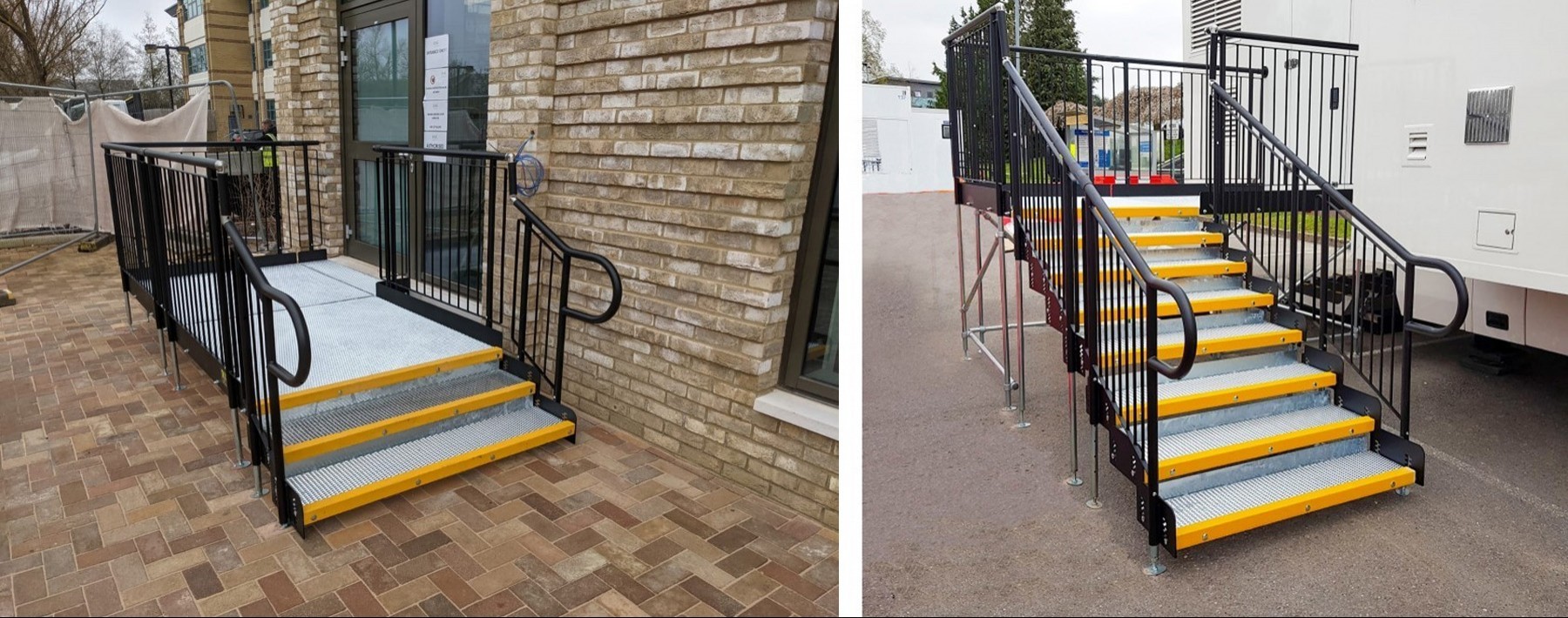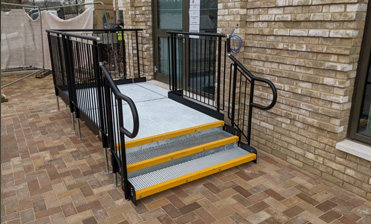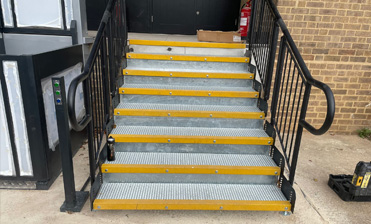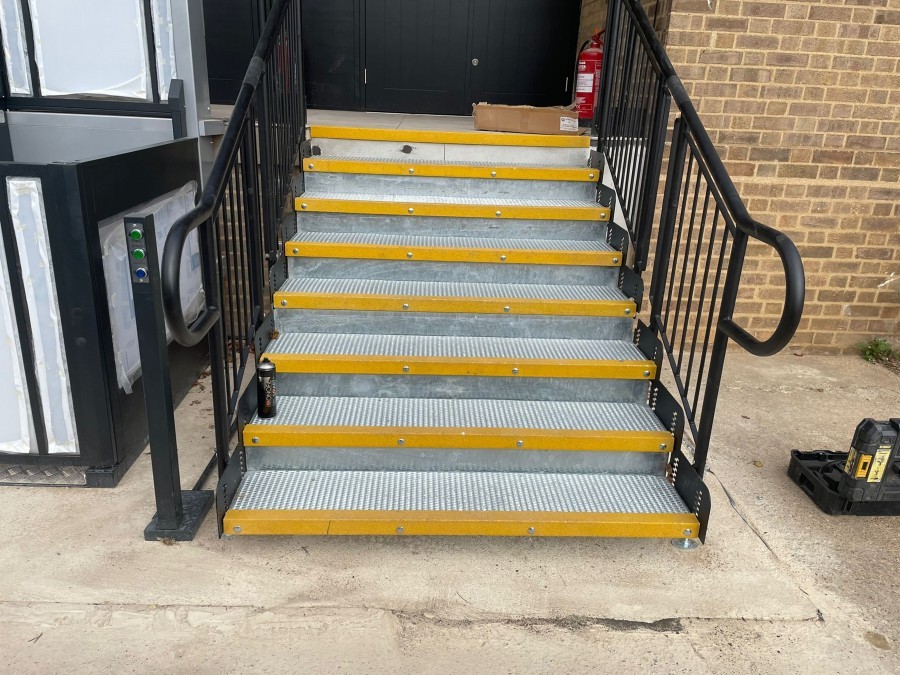
Published on Tuesday 27th September 2022
Yes, it is often the case that public access steps need approval from building control authorities. If your project specification necessitates this, any step system must adhere fully to the requirements outlined in Documents K and M of the Building Regulations. Additionally, it should include other essential safety measures and features to prevent falls, collisions, and injuries in a public environment.
Yes, it is often the case that public access steps need approval from building control authorities. If your project specification necessitates this, any step system must adhere fully to the requirements outlined in Documents K and M of the Building Regulations. Additionally, it should include other essential safety measures and features to prevent falls, collisions, and injuries in a public environment.
We manufacture, supply, and install a fully compliant modular step system offered in an extensive range of lengths, widths, heights, and configurations.
REQUEST A QUICK PRICE
Quotations can be returned within 24hrs if there is clear information given, including project address, drawings, photos and contact details.
Compliant Features For Public Access Steps
The step system must have the following compliant features…
Yellow Tread Strips - This is a safety feature designed to help those with impaired vision identify the nose of the steps and disguise any level changes.
.jpg)
Warm-to-touch Infill Handrail - This product is included to prevent users from climbing or falling through gaps. Warm-to-touch means it should not become excessively cold or hot to touch.
.jpg)
Continuous Handrail – This handrail system guarantees the users will continuously have a rail to grip on too, limiting falls and collisions.
Closed Trombone Ends – Tis featurei is added to the ends of a step unit to prevent clothes from snagging.
.jpg)
1100MM High Rail - These handrails attach to any level sections (Reference: Document K, p16, edition 24).
.jpg)
Heavy-Duty Platform– It is important to have a strong platform that can safely support high volumes of public traffic. Our own platforms continues to have a safe loading capacity of 1,000kgs.
Fire-Resistant Material – A material such as steel will not typically burn and melt at temperatures encountered in building fires.
Document M Recommendation for Access Steps
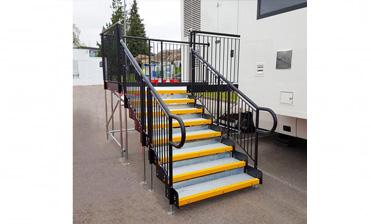 Document M of the Building Regulations states that steps must have a height between 150-170mm.
Document M of the Building Regulations states that steps must have a height between 150-170mm.
Also, the minimum step width should be 1200mm (Doc M. Vol 2. Page 19 1.26e / BS8300-1. Page 36).
The steps must have a depth of 280-425mm. Plus, A handrail is required if there are three or more risers.
It is recommended that steps have a rail on each side to support users with limited use of one half of their body.
Sources:
Crown, 2021, The Building Regulations, Approved Document M: access to and use of buildings, volume 2: buildings other than dwellings (https://assets.publishing.service.gov.uk/media/60b0ea89d3bf7f43560e324a/Approved_Document_M_vol_2.pdf).
Crown, 2013, The Building Regulations 2010, Approved Document K: protection from falling, collision and impact (https://assets.publishing.service.gov.uk/media/60d5bdcde90e07716f516cfd/Approved_Document_K.pdf).
THE UK’S EXPERTS IN MODULAR RAMP SYSTEMS.
Rapid Ramp
Riverside Works, Church Ln, Etchingham, TN19 7AS
Hours:
8am - 5pm, Monday to Friday

